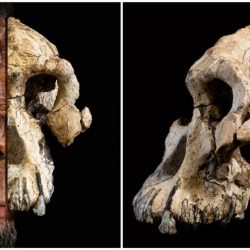Why did the Kumeyaay do agriculture?
Capitan Grande, about 35 miles east of San Diego, is the name of the canyon through which the San Diego River once ran. With abundant water, Kumeyaay Indians living there sustained themselves through farming. As the non-Indian population grew, demand for water increased.
What did the Kumeyaay call San Diego?
The Spanish named the Indians “Diegueno,” in reference to the Mission at San Diego (in the Treaty of Santa Ysabel the United States continued this label by referring to the Kumeyaay as the “Diegueno” Indian Nation).
What did the Kumeyaay hunt?
The Kumeyaay hunted rabbit, quail, antelope, and deer with bows and axes. They also fished with hooks and nets. The women wove coil baskets, and made pottery, clothing, and shelter. The Kumeyaay had advanced land management techniques, including erosion control, controlled burns, and water management.
What did the Kumeyaay trade for?
The Kumeyaay Indians traded with neighboring tribes. They traded rabbit skin blankets, baskets, pots, carrying nets, shells, plants, and other things. They traded for things that they couldn’t find in their own environment such as obsidian which is a hard, sharp rock.
What language did the Kumeyaay speak?
Kumeyaay (Kumiai), also known as Central Diegueño, Kamia, and Campo, is the Native American language spoken by the Kumeyaay people of southern San Diego and Imperial counties in California.
Where do the Kumeyaay live now?
The Kumeyaay, also known as Tipai-Ipai or by their historical Spanish name Diegueño, are a tribe of Indigenous peoples of the Americas who live at the northern border of Baja California in Mexico and the southern border of California in the United States.
Do the Kumeyaay still live in San Diego?
The Southern Diegueño are known in their language as the Kumeyaay. The Kumeyaay/Diegueño occupy most of San Diego County and northern Baja Mexico, from around Escondido to south of Ensenada. The Luiseño occupy most northern San Diego County, north of Agua Hedionda and Escondido.
What Indian tribes live in San Diego?
Five distinguishable American Indian groups are present in San Diego County at the time of Spanish contact: Luiseno, Cahuilla, Cupeno, Kumeyaay, and Northern Diegueño. Native peoples live in semi-permanent villages, traveling to forage for food and depending heavily on acorns, small animals, and fishing.
What religion did the Tipai tribe follow?
At first, the Ipai and Tipai also rejected the attempts to convert them to Catholicism, preferring their ancient traditional religious beliefs and practices. Most of the Ipai and Tipai creation stories, deities and rituals were strongly opposed by Spanish missionaries, including Father Junipero Serra.
What kind of food did the Kumeyaay eat?
The Kumeyaay planted trees and fields of grain; grew squash, beans and corn; gathered and grew medicinal herbs and plants, and dined on fresh fruits, berries, pine nuts and acorns. Kumeyaay fished, hunted deer and other animals, and were known for basket weaving and pottery.
How do you say hello in Kumeyaay?
Instead of an equivalent of “hello” or “good day,” the Kumeyaay greeting, haawka, means “may that fire in you burn bright.”
What Native American tribe is the richest?
1. Shakopee Mdewakanton – Annual Revenue of $1 Billion. The Shakopee Mdewakanton are the wealthiest Native American tribe, going by the individual personal wealth. They are 480 members, and each member gets around $84,000 per month, as disclosed by a tribe member going through a divorce.
What is the largest Indian tribe in California?
The Yurok Tribe
The Yurok Tribe is currently the largest Tribe in California, with more than 5,000 enrolled members.
What was the Kumeyaay religion?
Religious Beliefs. The Kumeyaay worshiped a high god and his prophet, Kuuchamaa, who taught moral rules and proper behavior. Eagles, red-tailed hawks, and ravens were messengers between chiefs and God. Lesser spirits in all living things were placated by rituals.
Where do the Kumeyaay live?
How do you say good morning in Kumeyaay?
The word ‘Ehaun’ means good. Then repeat the suffix (end) of the greeting. If you feel really good you can say ‘Ehaun’ twice. I asked my Dad about saying “Good Morning.” He thought about it a while and remembered people saying “Inyah Quhaun.” (Good Morning) Also “MimSupQuaHaun.”
What language is Kumeyaay?
Are there any full blooded Cherokee left?
Yes there are still full blood Cherokees. My mother was full and I have many family members that are full blood. The term is full blood not full blooded. There are 3 federally recognized tribes.
How much money do you get for being Native American?
Members of some Native American tribes receive cash payouts from gaming revenue. The Santa Ynez Band of Chumash Indians, for example, has paid its members $30,000 per month from casino earnings. Other tribes send out more modest annual checks of $1,000 or less.
What is the largest Indian tribe in the US?
| Tribal group | Total | American Indian/Alaska Native alone |
|---|---|---|
| Total | 4,119,301 | 2,475,956 |
| American Indian tribes | ||
| Cherokee | 729,533 | 299,862 |
| Navajo | 298,197 | 275,991 |
What kind of food did the Kumeyaay Indians eat?
Traditional Kumeyaay food sources such as acorns and pine seeds, for example, were placed in these holes, then smashed and ground into meal using a mano stone tool. Acorns were a staple food source of the traditional Kumeyaay diet, as such, oak trees were rarely cut down by the Indians because they grow this important food source.
What kind of land did the Kumeyaay live on?
Territory belonging to a band often included adjacent holdings stretching from the mountains and river plains, to the coast. The Kumeyaay took advantage of the different climatic zones in the region, surviving fluctuations in the climate by rotating domestic crops and living off varieties of food sources in the different ecological systems.
What kind of crops did the ancient Mesopotamians grow?
Ancient Mesopotamian farmers cultivated wheat, barley, cucumbers, and other different foods and vegetables. They used stone hoes to plow the ground before the invention of the plow. The Tigris and the Euphrates rivers that surrounded Mesopotamia made irrigation and farming a lot easier and more convenient.
What did the Kumeyaay Indians wear on their feet?
For their feet, they also made sandals from yucca or agave fibers to wear on long trips or over sharp rocks. In some places Kumeyaay people still know how to make these sandals. For personal decoration and jewelry, people would wear bead necklaces. They would make the beads out of clam, abalone or olivella shells.
Traditional Kumeyaay food sources such as acorns and pine seeds, for example, were placed in these holes, then smashed and ground into meal using a mano stone tool. Acorns were a staple food source of the traditional Kumeyaay diet, as such, oak trees were rarely cut down by the Indians because they grow this important food source.
Territory belonging to a band often included adjacent holdings stretching from the mountains and river plains, to the coast. The Kumeyaay took advantage of the different climatic zones in the region, surviving fluctuations in the climate by rotating domestic crops and living off varieties of food sources in the different ecological systems.
How did the Kumeyaay contribute to the Yuma War?
This led to the San Diego Tax Rebellion of 1851 or “Garra’s Revolt”, with the destruction of Warner’s Ranch led by the Cupeño, opening up a new western front of the Yuma War. The Kumeyaay agreed to join the revolt alongside Cahuilla, Cocopah, and Quechan warriors, but made no military commitments to attack San Diego or capture Fort Yuma.
What are the names of the three Kumeyaay languages?
According to Margaret Langdon, who is credited with doing much of the early work on documenting the language, the general scholarly consensus recognized three separate languages: Ipai (Iipay) (Northern Kumeyaay), Kumeyaay proper (including the Kamia/Kwaaymii), and Tipai (Southern Kumeyaay) in northern Baja California.






